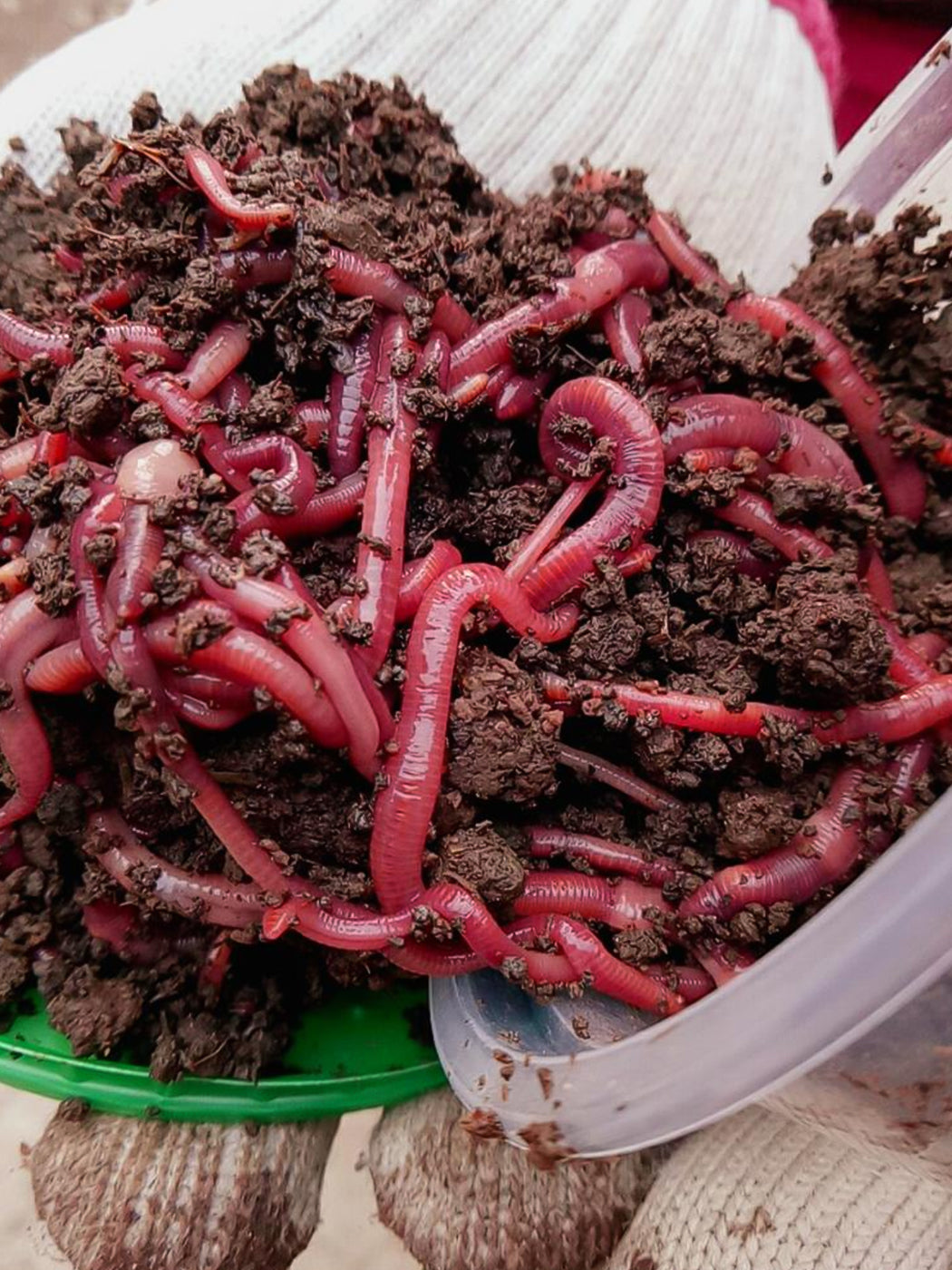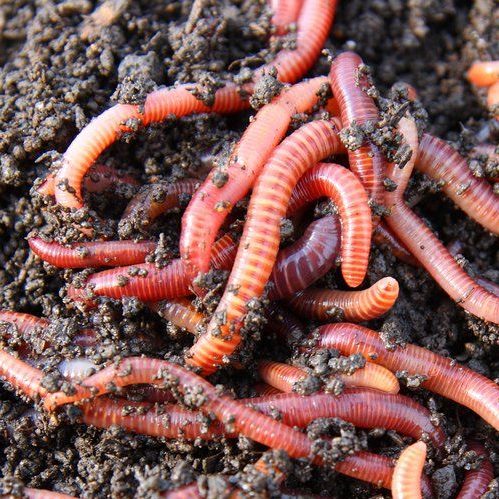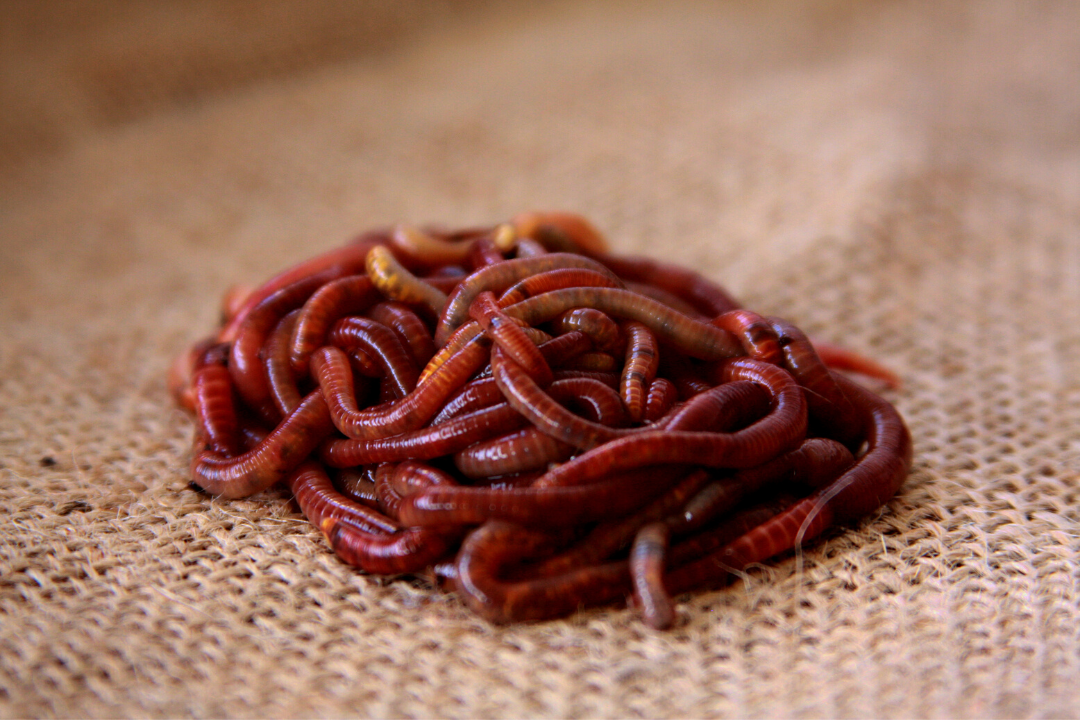Red Wigglers 101: Whatever You Required to Know for Thriving Gardens
Red wigglers, or Eisenia fetida, play an essential function in sustainable gardening methods, acting as effective decomposers that convert organic waste into useful vermicompost. Recognizing their environment, nutritional choices, and the myriad benefits they provide can transform your gardening approach (Red Wiggler Express). As these worms thrive in specific problems, their treatment and administration are necessary for optimizing their contributions to soil health. The inquiry continues to be: what steps can you require to harness the complete possibility of these amazing microorganisms in your very own garden?
Comprehending Red Wigglers

Red wigglers grow in environments abundant in natural material and wetness. Red Wiggler Express. They have an unique gastrointestinal system that permits them to refine food scraps rapidly, secreting spreadings that are packed with necessary nutrients such as nitrogen, phosphorus, and potassium. These spreadings improve soil structure, boost water retention, and foster advantageous microbial activity, all of which contribute to durable plant wellness
Additionally, red wigglers can endure in varied problems, making them versatile to various gardening methods, including interior and outside composting systems. Their capacity to eat huge amounts of organic waste daily positions them as important allies for both home gardeners and industrial cultivators. By including red wigglers right into horticulture initiatives, one can dramatically boost dirt fertility and assistance lasting horticulture techniques.
Perfect Environment for Red Wigglers
Developing an optimal setting for red wigglers is vital for maximizing their composting capabilities and overall health. Red wigglers thrive in moist, dark, and well-aerated habitats, which very closely resemble their natural surroundings in fallen leave litter and rotting organic matter. An ideal environment must supply a temperature range between 55 ° F and 77 ° F(13 ° C to 25 ° C), as severe temperature levels can worry or harm the worms.
The bedding product, such as shredded newspaper, cardboard, or coconut coir, should be maintained moist however not overly damp, as too much wetness can lead to anaerobic problems destructive to worm health and wellness. Furthermore, a pH degree between 6.0 and 7.5 is perfect, making sure a balanced atmosphere.
Proper aeration is equally vital; it permits oxygen flow and prevents the build-up of dangerous gases. A container or bin made for vermicomposting must have drainage openings to eliminate excess dampness and promote air movement. Routine tracking of these conditions is crucial for preserving a thriving red wiggler populace, ultimately improving their efficiency in breaking down natural waste and enriching yard soil.
Dietary Requirements and Preferences

Red wigglers display certain choices; they are particularly keen on softer, decomposing materials over more difficult or more coarse compounds. It is important to stay clear of feeding them citrus peels, onion, and garlic in huge quantities, as these can be hazardous. Furthermore, meat, dairy products, and you can check here oily foods must be excluded, as they can attract pests and produce unpleasant odors.
(Red Wiggler Express)To maintain ideal health, a balanced mix of environment-friendly and brown products is advised. Green products, such as veggie scraps, provide nitrogen, while brown products, like cardboard and dried out leaves, supply carbon. Checking the moisture material and making sure a consistent food supply will even more improve their development and composting capabilities. By catering to their dietary requirements, garden enthusiasts can foster a flourishing population of red wigglers in their garden compost systems.
Advantages of Making Use Of Red Wigglers
The exceptional advantages of utilizing red wigglers in gardening extend much past their function in composting. These versatile organisms add dramatically to dirt health and wellness, improving nutrient schedule and advertising microbial task. By aerating the soil as they delve, red wigglers enhance drain and root infiltration, producing an ideal setting for plant development.
Moreover, red wigglers are efficient recyclers of natural waste, transforming it right into nutrient-rich castings that act as an outstanding all-natural fertilizer. These castings contain beneficial microbes and necessary nutrients, such as nitrogen, phosphorus, and potassium, which are important for plant development. The slow-moving release of nutrients from worm spreadings guarantees a steady supply, decreasing the threat of nutrient leaching and promoting lasting gardening techniques.
Furthermore, the presence of red wigglers can assist suppress soil-borne plant illness. Their digestive procedures produce compounds that hinder damaging virus, thus boosting plant health. Using red wigglers cultivates a more lasting gardening approach by lowering reliance on chemical fertilizers and advertising a closed-loop system, where waste is transformed right into valuable resources. Overall, integrating red wigglers right into gardening practices uses a multitude of environmental and farming benefits.
(Charlotte NC Worms For Sale)
Composting With Red Wigglers

To launch an effective vermicomposting system, select a suitable container with appropriate air flow and water drainage. The excellent environment for red wigglers includes a damp, dark setup with temperature levels between 55 ° F and 77 ° F. Begin by layering shredded paper, cardboard, and food scraps, guaranteeing a balanced mix of carbon and nitrogen-rich materials.
Red wigglers flourish on vegetable peels, fruit scraps, coffee grounds, and eggshells, while preventing meat, milk, and oily foods that can bring in parasites. Regularly keep an eye on wetness levels; the bed linen must be wet yet not soaked. Harvest worm spreadings every few months by separating the worms from the garden compost, which can then be utilized directly in gardens or stored for later use.
Implementing vermicomposting not just lowers land fill waste yet additionally enhances yard soil, promoting healthy and balanced plant growth and sustainable gardening techniques. Welcome this eco-friendly approach to boost your horticulture endeavors.
Conclusion
In summary, red wigglers are essential microorganisms for boosting garden performance with effective composting. Their specific habitat demands, dietary choices, and considerable benefits add to lasting gardening practices. By making use of red wigglers, gardeners can considerably improve dirt high quality and nutrient availability, cultivating healthier plant development. Accepting the practice of vermicomposting not just supports waste decrease but additionally promotes an eco-friendly balance within yard environments, eventually bring about prospering and resilient yards.